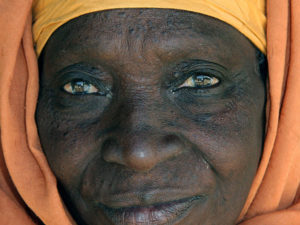Concerns about Graphs of DRC: Thoughts on M&E in Global Health
I looked at a graph of data on DRC in a beautiful glossy report, whose purpose was to inspire me to action. I noticed that facility deliveries and skilled attendance at birth were high (over 90%), which means that most women are giving birth in health facilities. This looks like success. I am not sure what more should be done. The narrative does not explain the reason for this success.
My initial thought was that something was missing from this report. I didn’t feel that I understood the situation, so I decided to look a bit more into the statistics. First I wanted to make sure that these high levels were not mistakes. I consulted the Demographic and Health Survey (DHS), which is the source I feel most comfortable turning to for this type of information. I found out that for the 2013-14 survey both facility births and skilled birth attendance were 80%, which is high, so accuracy is not the problem. Since DRC is not known for great health care, I decided to look into maternal mortality rates (MMR). Again, I turned to DHS and found that for the 2013-14 survey the MMR was 846 maternal deaths for every 100,000 live births for the seven years prior to the survey and that for the 2007 DHS the MMR was 549 for the four preceding years. Both estimates are quite high and appear to indicate that MMR is increasing over time.
I wondered if national figures for facility births and skilled attendance at birth were distorted because women who live in cities have extremely high levels of facility births and skilled attendance at birth which masks the situation in rural areas or if perhaps women in the wealthiest quintile had very high rates as compared to women in lower wealth quintiles. However, differences were quite small among these groups, so this did not explain the situation I observed with from the data.
Since there is a lag between MMR estimates and information on facility births and skilled birth attendance, I decided to look at values for the latter indicators from the 2007 survey. I found that facility births were 70% and skilled attendance at birth was 74%. This means that these indicators improved between the two surveys.
I decided to continue investigating and turned to a different source: Trends in Maternal Mortality: 1990 to 2015 Estimates by WHO, UNICEF, UNFPA, World Bank Group and the United Nations Population Division. These estimates are made by combining information from a variety of sources. Information from this source further confirmed that MMR is unacceptably high in DRC. MMR started at 879 (1990), changed to 787 (2005), and the most recent estimate is 693 (2015).
I still wanted to better understand the situation. Since I have never been to DRC, I decided to talk with colleagues who work in DRC. They told me that women do deliver in health facilities, but these facilities are of very poor quality. Why didn’t the narrative tell me this? How was I supposed to know what the report was asking me to act on when it provided only information on facility deliveries and skilled attendance at birth? Unfortunately, this is not the only report where I encountered this type of problem.
The lesson I see is that it is important to step back and look at the information that you are providing, think about what it means, and try to include other information to show a better picture of the situation. Now I understand that DRC has high levels of facility deliveries and skilled attendance at birth, and also has very high maternal mortality rates. Many health facilities are of poor quality. I now know that we cannot be content that women delivering in DRC are in good shape. There is quite a bit of work to do in order to ensure that women in DRC survive giving birth.



